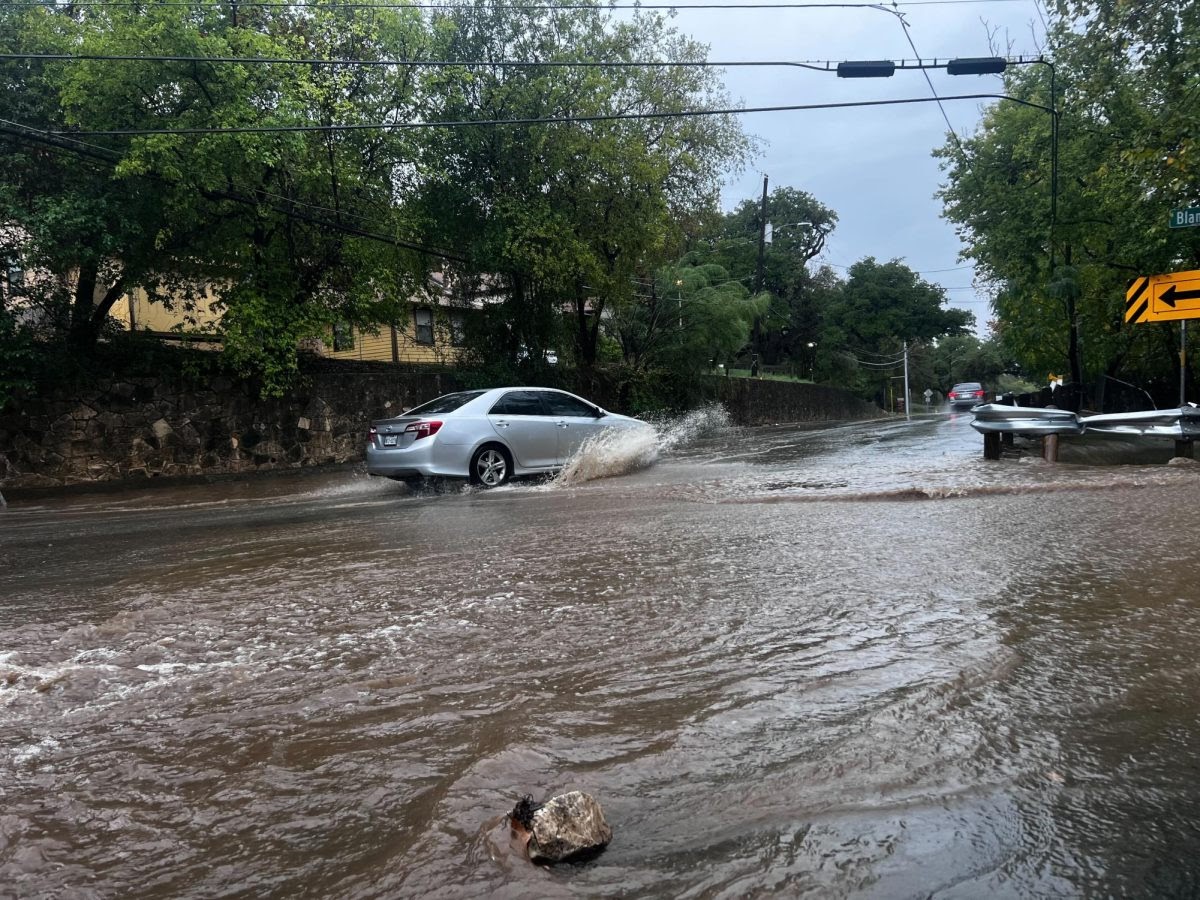
What to do if you encounter a flood warning while driving

Tips for Dealing with Water on The Road
First things first. It’s never a good idea to drive on flooded roadways even when you’re caught unexpectedly in the middle of a trip. If you encounter floodwaters on the road ahead, turn around – don’t drown.
However, unpredictable weather can put you in a dangerous situation fast before you can safely get off the road. If you find yourself driving through water despite your best effort to avoid the situation we have some tips that can help.
Why It’s a Bad Idea to Drive Through Water
When water rushes over a street it can hide dips, debris and roads that have been washed away entirely. It’s not the road you know no matter how many times you’ve driven it.
Six inches of water is enough to hit the bottom of most passenger cars, flooding the exhaust and leaving you immobile. If you cannot walk through water (especially moving water), do not attempt to drive across it. It doesn’t take much for most cars to float. And even the deepest tire tread can’t give you a gecko-like grip that will keep you grounded.
Extra caution has to be taken while driving in the rain or wet weather. Wet roads can cause compromised drivability that increases the risk of deadly accidents. Hydroplaning is a real possibility during and after a good rain. In a flood situation, anything from downed power lines to debris can easily be hidden under the water and harm you without warning.
6 Tips for Driving Through Standing Water as Safely as Possible
Driving through water should always be avoided. If you absolutely must drive over a water-logged road follow the best practices below.
1. Drive Down the Center
What part of the road is the safest to drive on during flood conditions? Forget about lanes and drive down the center. The water tends to be most shallow at the center of the road.
2. Take Turns With Other Cars
Creating a single lane behind other drivers is safer than passing by and splashing water onto passing vehicles. The vehicle in front of you can help move water out of the way so you have a little better traction. Plus, stress is already running high when the roads are wet, there’s no need to add extra frustration to the mix by blasting past people.
3. Only Cross When the Water is Extremely Shallow
Only 15cm (a little over a one-half inch) of water at any speed can cause you to lose control – badly. Never try and cross water that rises above the center of your wheels. That includes puddles.
4. Drive Slowly
The last thing you want to do is drive fast over watery roads. If you do have to cross water on the road enter at 1-2mph then drive at 3-4mph to avoid engine flooding.
5. Drive in Low Gear
Drive in low gear to protect the car. If you’re driving an automatic vehicle, keep the speed low enough to stay in first or second gear. Keep your foot on the gas and use the brake to regulate speed.
6. Dry Your Brakes
Once you get through the water you don’t want to spin out. You can dry your brakes after moving through water by braking lightly while driving very slowly.
Driving Through Moving Water or Floods
Stay out of moving water. Period. Many people have been put in dire situations after thinking they could drive through water that was clearly moving.
Does your SUV make you big enough to cross streams? No. Less than one foot of water will float your vehicle. Two feet can sweep most vehicles away even a heavy, lifted pickup truck.
If your wheels lose grip while driving through water (we told you not to go there), open the door of the car and let water in. You may be starting to float, but the extra water adds weight that will keep you down. If there’s a passenger in the vehicle have them do this so you can take advantage of the (hopefully) restored moment of traction.
What to Do If Your Car Floods
If your car floods do not try to restart the engine. It can cause severe damage. If that damage sets in, you may have to strip the engine. Before the engine is restarted, the plugs and injectors must be removed.
At that point, it’s best to safely exit the vehicle and head toward higher ground since the vehicle shouldn’t be driven even if the water recedes.
Quick Tips for Driving Across Water
Time for a summary! These six quick tips can make all the difference in the world when there’s water on the road.
* Never enter water you cannot cross on foot or water 6 inches or midway up your tires. Avoid crossing over moving water in all instances.
* Enter the water at 1-2 mph.
* Cross the water at 3-4 mph.
* Drive in the center of the road, the highest point.
* Let cars cross the road one-by-one.
* Dry brakes with slow, light taps after exiting the water.
